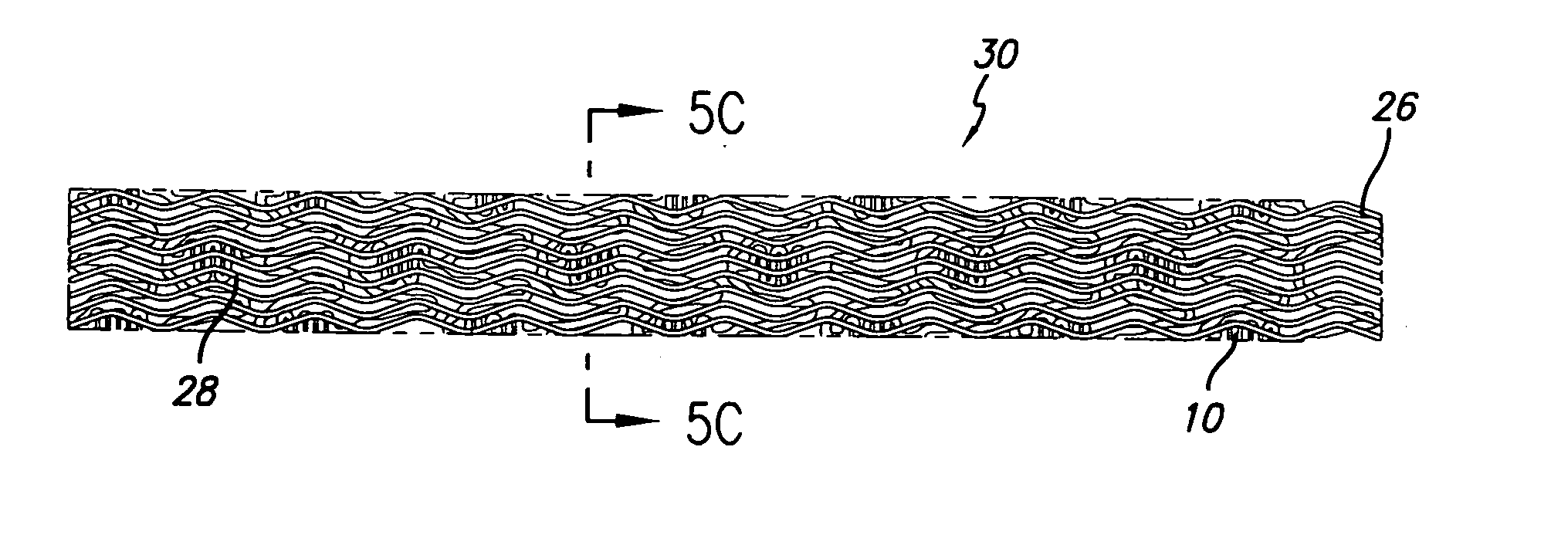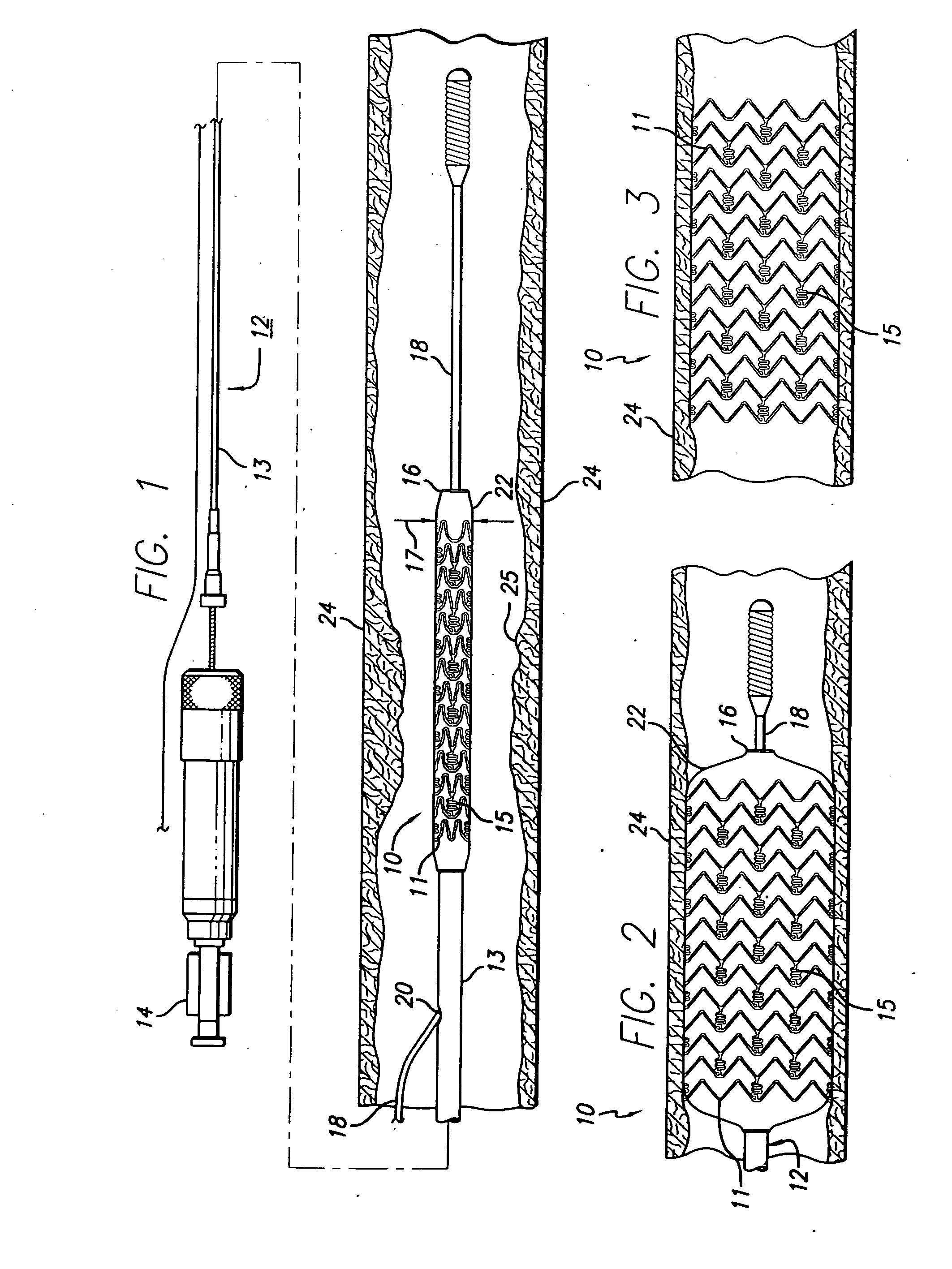Drug-eluting stent and methods of making the same
a stent and drug-eluting technology, applied in the field of intravascular stents, can solve the problems of drug-eluting stent devices that cannot be easily re-eluting, current design and fabrication methods of drug-eluting stent devices are not optimal, and various limitations exist in such current design and fabrication methods of drug-eluting stents. the effect of uniform drug distribution in the artery
- Summary
- Abstract
- Description
- Claims
- Application Information
AI Technical Summary
Benefits of technology
Problems solved by technology
Method used
Image
Examples
Embodiment Construction
[0035] As shown in the drawings for purposes of illustration, the present invention is directed to a drug-eluting stent delivery system which includes a mechanical component and a local drug-eluting component, namely an intravascular stent and a prepatterned polymeric sleeve for controlled release of therapeutic drugs and for delivery of the therapeutic drugs in localized drug therapy in a blood vessel. The present invention is also directed to an intravascular stent having a drug-eluting component in the form of a plurality of microfilament strands attached to an outside surface of the stent structure in a spaced apart orientation. Methods of making a drug-eluting stent delivery system having a drug-eluting component disposed in the form of a prepatterned polymeric sleeve or a plurality of microfilament strands for controlled release and delivery of therapeutic drugs in localized drug therapy in a blood vessel are also disclosed herein.
[0036] Turning to the drawings, FIG. 1 depict...
PUM
| Property | Measurement | Unit |
|---|---|---|
| width | aaaaa | aaaaa |
| width | aaaaa | aaaaa |
| thickness | aaaaa | aaaaa |
Abstract
Description
Claims
Application Information
 Login to View More
Login to View More - R&D
- Intellectual Property
- Life Sciences
- Materials
- Tech Scout
- Unparalleled Data Quality
- Higher Quality Content
- 60% Fewer Hallucinations
Browse by: Latest US Patents, China's latest patents, Technical Efficacy Thesaurus, Application Domain, Technology Topic, Popular Technical Reports.
© 2025 PatSnap. All rights reserved.Legal|Privacy policy|Modern Slavery Act Transparency Statement|Sitemap|About US| Contact US: help@patsnap.com



